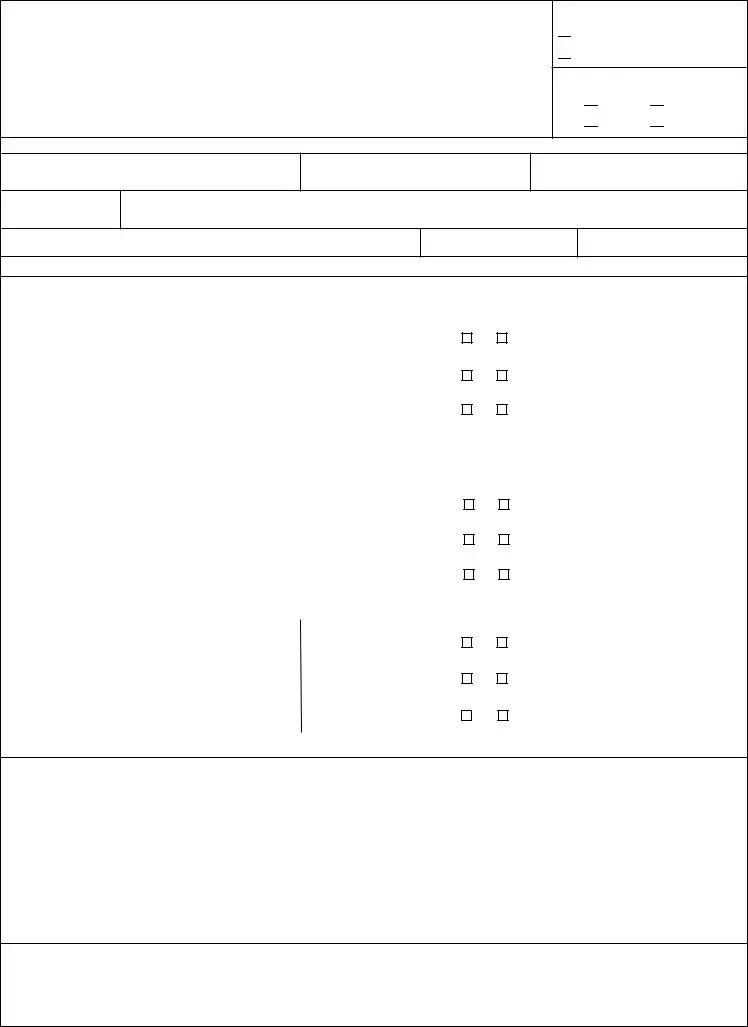The South Carolina 1102 form shares similarities with other beneficiary designation forms, such as those used in life insurance policies. Both types of documents allow the account holder or insured party to specify who should receive benefits upon their death. In each case, primary and contingent (or secondary) beneficiaries can be named, ensuring that the benefits reach the intended recipients according to the policyholder's wishes. Like the 1102 form, life insurance forms require thorough identification of each beneficiary, including their relationship to the insured, to precisely direct the distribution of benefits.
Another document resembling the South Carolina 1102 form is a will. A will is a legal document that outlines how a person's estate and assets are to be distributed upon their death. Although a will covers a broader range of assets and can include detailed instructions for managing the estate, the 1102 form specifically deals with retirement and insurance benefits. Both documents, however, fundamentally serve to ensure an individual's assets are distributed according to their wishes after death, highlighting their importance in estate planning.
Similarly, the 401(k) and other retirement account beneficiary designation forms closely align with the purpose and structure of the South Carolina 1102 form. These documents are utilized to name beneficiaries for retirement accounts, determining who will inherit the account's funds. Like the 1102 form, they override the estate distribution instructions in a will for the specific assets they cover, making it crucial for the account holder to keep these designations updated to reflect their current intentions.
Trust documents also bear resemblance to the 1102 form, as they involve designating beneficiaries for the assets held within the trust. Trusts offer more control over how and when assets are distributed compared to the direct beneficiary designations in the 1102 form. Both tools are vital in estate planning, used to manage and protect assets as well as to specify beneficiaries, albeit in different legal contexts.
The transfer on death (TOD) deed or form, similar to the 1102, allows for the designation of beneficiaries for particular assets, such as real estate or brokerage accounts. This document ensures that the specified asset is transferred directly to the named beneficiary upon the death of the asset holder, bypassing probate. While the 1102 form applies to retirement benefits, the concept of avoiding probate and directly passing assets to a beneficiary links these two types of documents.
Payable on death (POD) agreements for bank accounts operate under a similar premise to the South Carolina 1102 form, focusing on designating beneficiaries who will receive the funds in the account upon the account holder's death. Both POD agreements and the 1102 form facilitate a smooth transition of financial assets to beneficiaries, avoiding probate court for those specific assets.
Pension beneficiary designation forms, akin to the 1102, are used by pension plan participants to name who will receive pension benefits after their death. This parallel underscores the critical role such forms play in financial and estate planning, ensuring that pension benefits are transferred in accordance with the participant's wishes.
Another related document is a durable power of attorney, which, while primarily appointed to make decisions on one's behalf in case of incapacitation, often includes designations similar to those found in the 1102 form when addressing financial matters and assets. The key difference lies in the durable power of attorney's active role during the asset holder's life, contrasted with the posthumous nature of beneficiary designations.
Defined benefit plan beneficiary designation forms also mirror the 1102 form, as they are critical for participants in these plans to indicate who should receive benefits. These forms ensure that benefits from such retirement plans are directed according to the participant's current intentions, similar to the role of the 1102 form in managing beneficiaries for public sector employees in South Carolina.
Finally, the IRA beneficiary designation form is another document that shares similarities with the South Carolina 1102 form. Individual Retirement Account (IRA) holders use this form to specify beneficiaries for their IRA funds, directly influencing how these assets are transferred upon the account holder's death. Much like the 1102 form, this designation is crucial for bypassing the probate process, ensuring the intended recipients receive the designated assets in a timely manner.


 New Enrollee
New Enrollee
 Change of Beneficiary
Change of Beneficiary
 SCRS
SCRS  PORS
PORS
 GARS
GARS  JSRS
JSRS